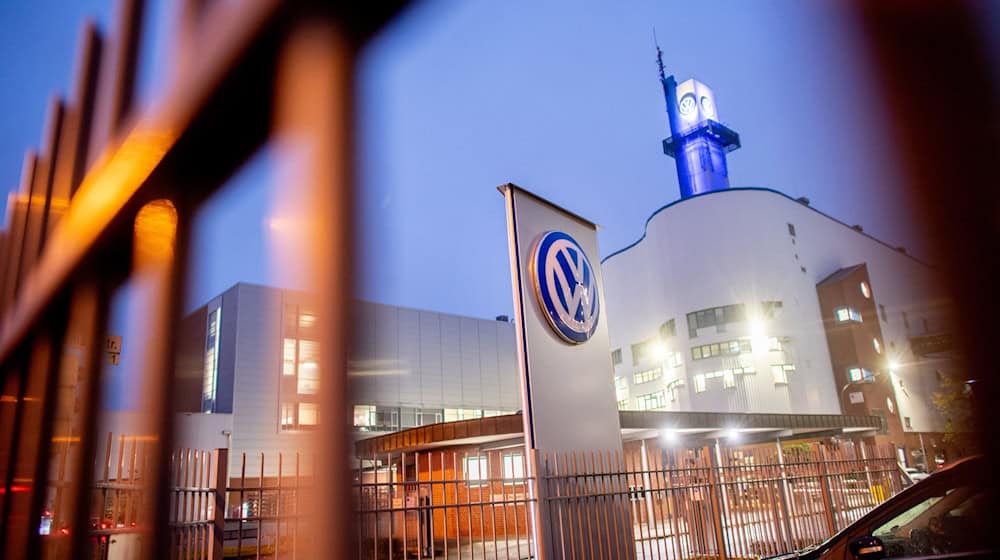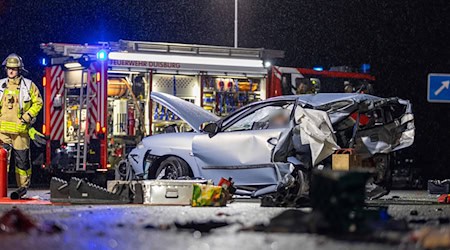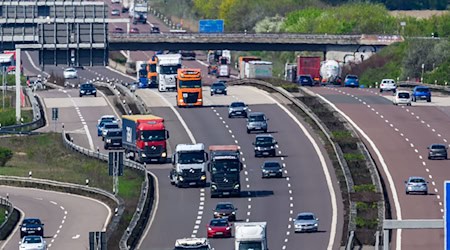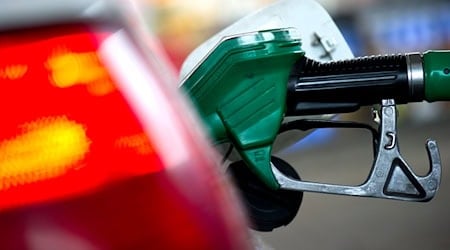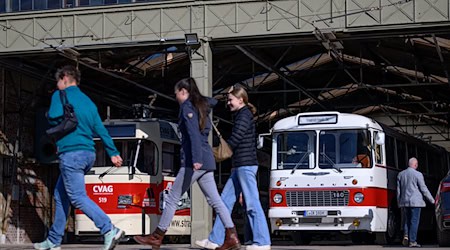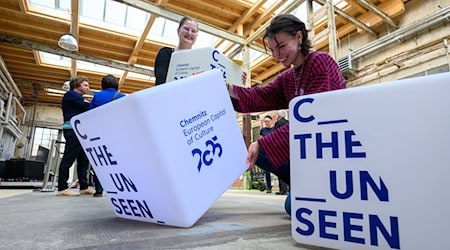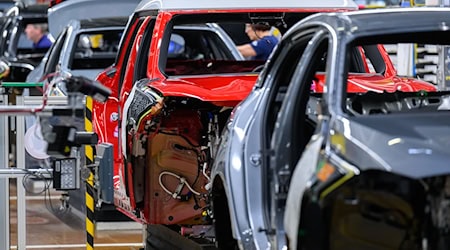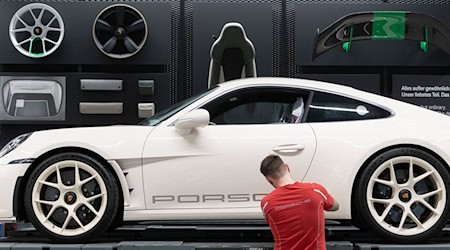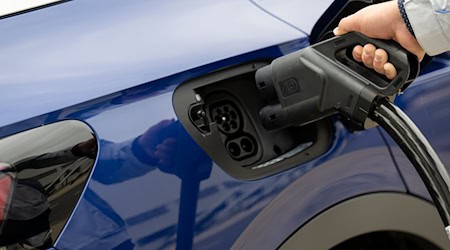For the first time, Volkswagen could be facing plant closures in Germany. At least three locations are on the test bench, according to works council head Daniela Cavallo. According to the Handelsblatt, VW has specifically calculated this for Emden, Osnabrück and Dresden. However, nothing has been decided yet. The Group itself has not yet provided any details. According to Cavallo, it could affect any plant: "No plant is safe!"
But how are the ten locations in Germany positioned so far? An overview:
Emden
For 50 years, the VW plant in Emden was primarily associated with one model: the Passat, which rolled off the production line from 1974. VW had opened the site ten years earlier - primarily because of its access to the port. The plant, which now employs 8,600 people, has since been converted into an all-electric site. VW has invested more than one billion euros since 2020. The ID.4 and ID.7 are now built instead of the Passat. Due to the weak demand for e-cars, the assembly lines were temporarily at a standstill. According to the Handelsblatt newspaper, VW estimates the potential savings from a closure at 600 million euros per year.
Osnabrück
The former Karmann site joined Volkswagen in 2009 following the insolvency of the previous convertible contract manufacturer. Now the plant with around 2,300 employees is once again facing an uncertain future. In addition to the T-Roc Cabrio, the plant currently mainly produces vehicles for its sister company Porsche: Boxster and Cayman. However, at the beginning of October, Porsche canceled the hoped-for follow-up order for e-sports cars. If the T-Roc Cabrio and the two Porsche combustion engines are phased out at the beginning of 2026, the plant will be left without a follow-up model, warns IG Metall. According to Handelsblatt, VW expects to save 130 million euros in the event of a closure.
Dresden
It is the newest and smallest VW site: the "Transparent Factory" in Dresden. Founded in 2001 for the Phaeton luxury model, it was a prestige project of the then CEO Ferdinand Piëch. But in 2016, VW pulled the ripcord in the face of falling sales figures. Since then, the factory and its 340 employees have been struggling to find a new purpose. The ID.3 has been assembled since the beginning of 2021 - in small numbers. VW is now openly considering ending vehicle production in Dresden. Possible savings, which VW expects according to "Handelsblatt": 60 million euros per year.
Wolfsburg
The VW main plant on the Mittelland Canal is considered the largest connected car factory in the world. The facilities cover 6.5 square kilometers and around 62,000 employees work for VW at the headquarters. The plant and the city of Wolfsburg were founded in 1938 for the production of the "KdF-Wagen", which later became the VW Beetle. Today, the Golf, Tiguan and Touran are built here. However, with a recent annual production of around 500,000 vehicles, the site is only operating at half capacity. VW called off the construction of another plant for electric cars in Wolfsburg in 2023.
Hannover
Hannover was the Group's second German plant in 1956. Six years earlier, the first VW Transporter had rolled off the production line in Wolfsburg. Now the "Bulli" got its own location. The Transporter remained the most important model in Hanover until the sixth generation was discontinued in mid-2024. Today, the Multivan and the all-electric ID. launched in 2022 are produced here. Buzz. The site has around 14,700 employees. The workforce has already been reduced since 2020 - without redundancies, as vacant positions are not filled. 3,000 jobs have been lost since then, with a further 2,000 to follow by 2029.
Zwickau
August Horch laid the foundation stone for the Audi brand here 120 years ago, and the Trabant small car was built in Zwickau during the GDR era. After reunification, VW built a new factory on the outskirts of the city. Today, with around 9,500 employees, it is regarded as the Group's lead plant for e-mobility. The car factory was the first in the Group to be completely converted to electric by 2020 at a cost of around 1.2 billion euros. Like Emden, Zwickau is now also suffering from the weak demand for e-cars. Shifts have already been cut and the contracts of temporary employees have not been extended.
Kassel (Baunatal)
The Volkswagen plant in Kassel is not actually located in Kassel, but in nearby Baunatal. Founded in 1958, the site is now the Group's largest component plant worldwide and, with 16,800 employees, the largest VW site in Germany after Wolfsburg. Transmissions and exhaust systems for combustion engines and electric motors for the electric models are produced here. Parts for the body and chassis are also produced in its own foundry. The site also has the largest spare parts warehouse in Europe, which distributes original parts for the VW, Audi, Škoda and Seat brands worldwide.
Braunschweig
Today's components plant in Braunschweig is considered to be the oldest VW factory in the world. Even before the main plant in Wolfsburg, the production of tools for future car production began here in 1938. Today, the site employs around 7,200 people and manufactures axles, brake disks and steering systems, among other things. Production is spread across three locations in the city. Braunschweig also plays an important role in e-mobility: since 2013, the battery systems that are then installed in e-cars have been produced here from delivered cells.
Salzgitter
The Group's largest construction site is currently located in Salzgitter: the Group's first own battery cell factory is being built right next to the existing engine plant. Production is set to start in 2025 and Salzgitter will then become "the engine lead plant to the cell lead plant", as VW announced. This is already the second major transformation for the site, which currently employs 6,350 people. The plant was founded in 1970 for the production of a new VW model, which then sold only moderately. Five years later, VW turned it into an engine plant. In 2023, more than 800,000 petrol and diesel engines were produced.
Chemnitz
Volkswagen's involvement in Chemnitz began even before reunification. VW four-stroke engines for the GDR models Trabant, Wartburg and Barkas had been produced here under license since 1988. The whole thing was arranged by the then VW Group boss Carl Hahn, a native of Chemnitz. After German reunification, Volkswagen then took over the engine plant. Unlike Zwickau, the site is still completely dependent on the combustion engine. Last year, the 1,800 employees produced 690,000 engines - exclusively for petrol engines.
Copyright 2024, dpa (www.dpa.de). All rights reserved

